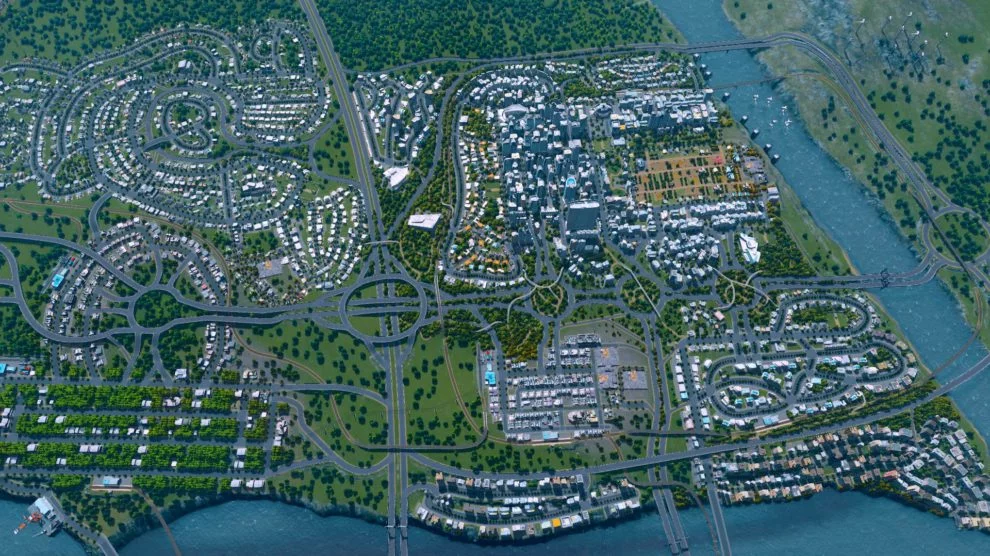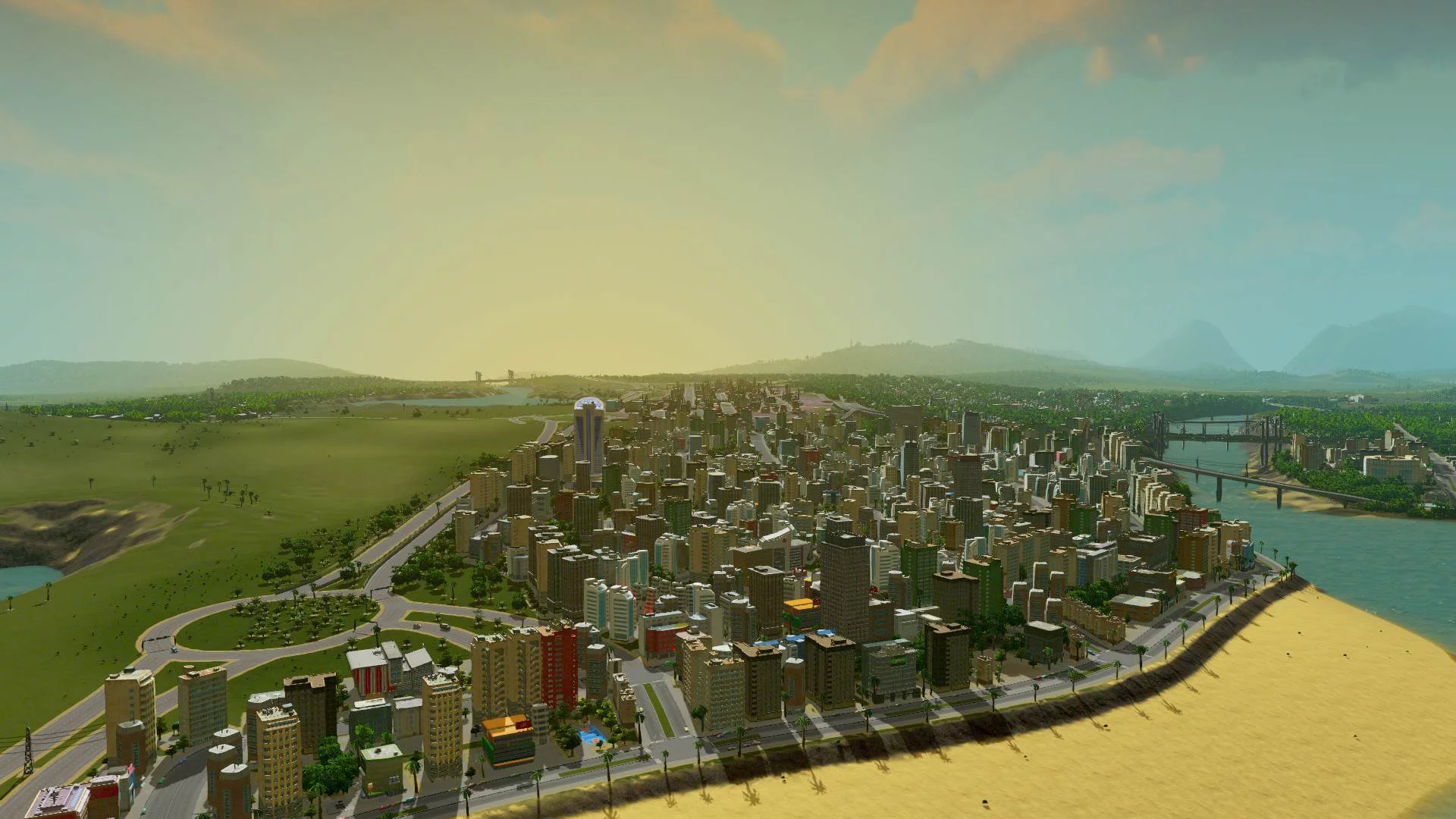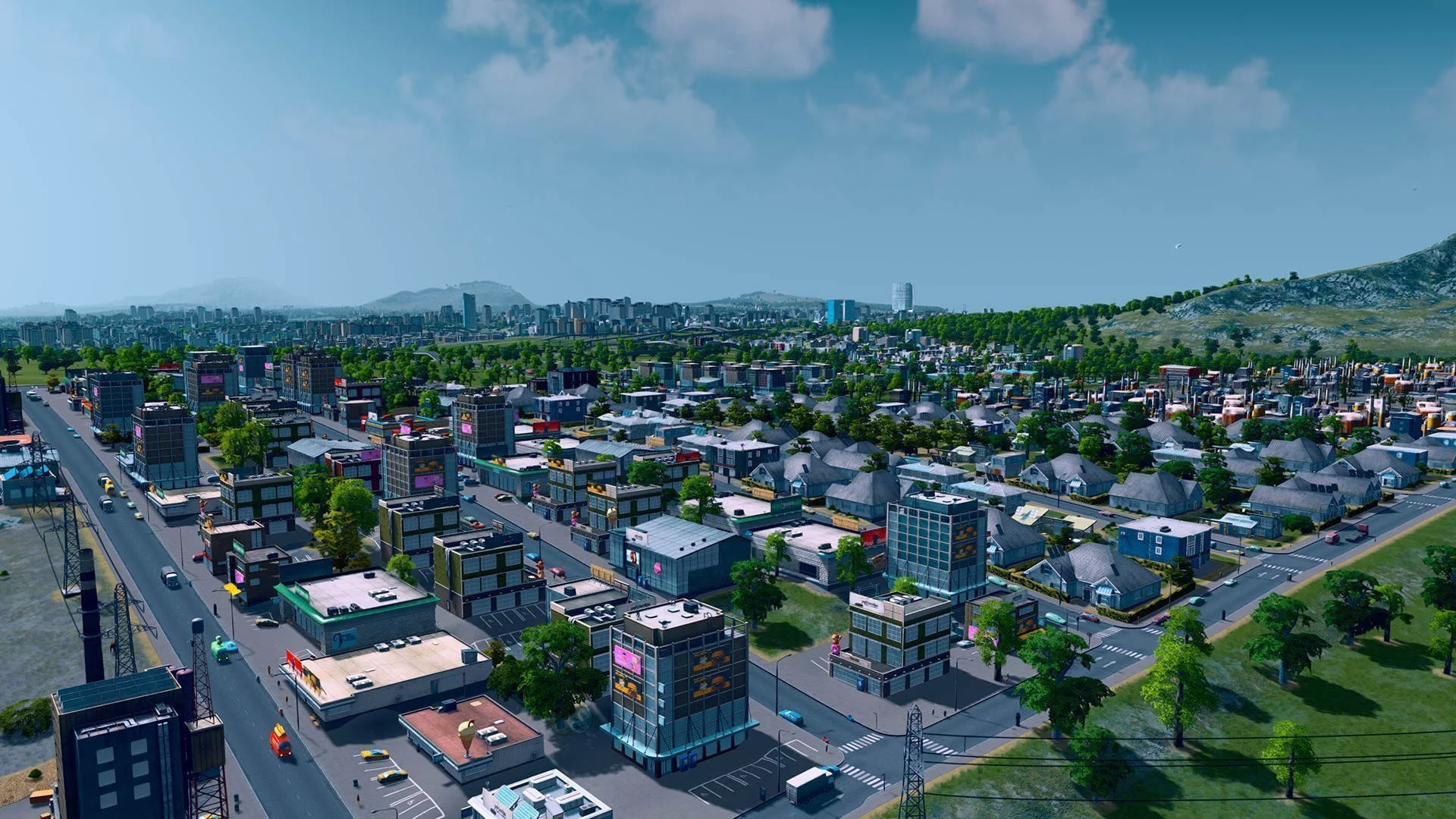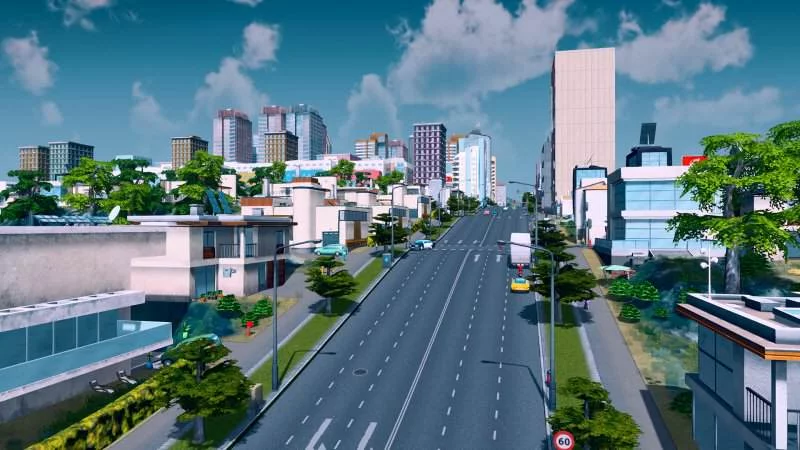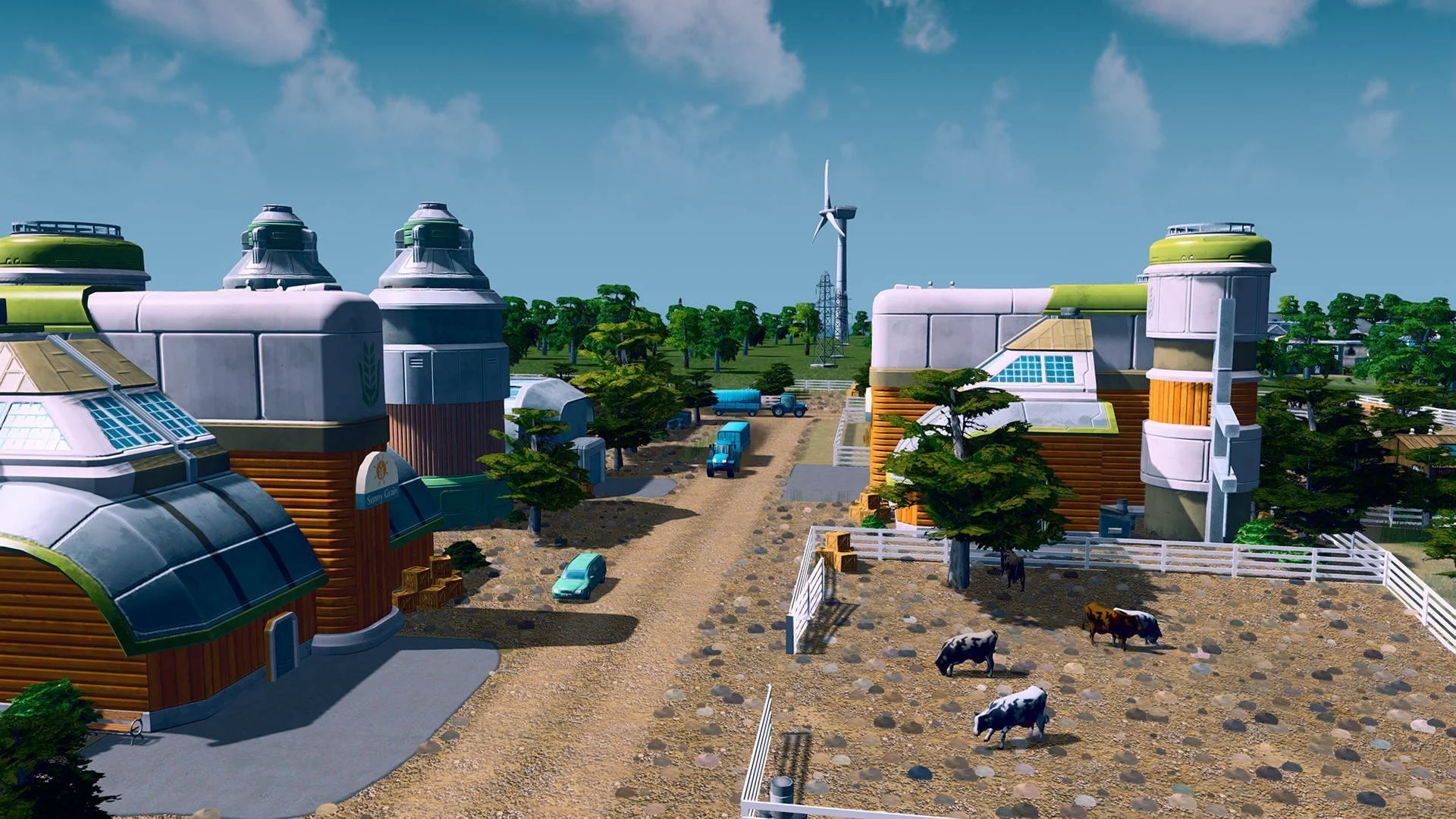I thought a good way to start this review would be to compare my Cities: Skylines creations to children. I care about them deeply, protect them from fire and crime, make sure they are educated, that their home is free from sewerage build-up and that dead bodies don’t sit in their homes for weeks awaiting pick-up by the crematorium. I overlook their flaws, like the tangled mess of their freeway exits and the bad traffic habits they can never seem to shake. I take on crippling debt just to ensure they have the best things.
Yes, I treat my Cities: Skylines creations like my (theoretical) children, but thank goodness they are not. For every time things get too rough, traffic gets a little too bad, the freeway knots just can’t be unravelled or the bank comes knocking at my door offering a shameful bail-out, I throw my imperfect child to the street and start afresh, learning from my mistakes and hoping that the next one is that Megatropolis I always wanted.
Cities: Skylines is the city building game you actually want. The solitary nature of painstaking civil engineering is respected by Colossal Order, you won’t be needing (or even be able) to rely on others to supply your city with services, there is no shared burden. City creation is your domain alone, and you can put your name on everything from the city itself to the individual citizens who reside within.
The comparisons to Sim City are obvious, the game was only greenlit after the issues that plagued Maxis’ 2013 title became apparent, and the one line description that best describes Cities: Skylines is “Sim City 2013 done properly”.
It was a special moment when I realised the generous but hardly epic initial patch of land offered to me by Skylines was merely a starting point. Your final city can end up nine times that size (or even larger with a popular mod on PC), provided you can find a way to make it all work together. Once your population hits 100,000 it can be intimidating to manage it all, especially as you try and correct your previous mistakes with new roads, freeways and connections, but getting to that point is most of the fun.
Cities: Skylines doles out new buildings and features as you reach population milestones, forcing you to endure and master the limitations of landfill, coal power and sewerage outposts before offering up more effective and environmentally friendly services.
What starts as a small residential settlement with a noxious power plant and landfill just far enough away so citizens aren’t bothered by the smell quickly progresses to a giant city capable of holding hundreds of thousands of residents. If you have played a city building sim before you will slide right in, Skylines relies on the tropes of the genre with residential, industrial and commercial zones applied to create your city with services thrown in where required.
Power and water are relatively streamlined, you just need to make sure they reach an area and enough is provided, easily tracked with the in game tools. Parks can be placed to keep people happy and special buildings are unlocked for reaching various milestones. Taxes can be adjusted and balancing the budget is as simple as making sure the number next to your cash reserves that indicates earnings per day doesn’t go into the red.
It’s a good thing most of Cities: Skylines feels this familiar as the games tutorial system is lacking at best and completely hopeless at worst. You will send at least one city broke with overzealous service provision, neglecting to build an adequate road network that you now cannot afford. Loans and even tax management are locked until you reach a couple of early population milestones so it is easy to get cornered but thankfully you won’t lose much progress and valuable lessons are learned.
This carries over to general information about your city, you need to open each individual panel to see the status of fire coverage, health, education and traffic while detailed city statistics are hidden in the pause menu and plastered on to a single line graph that looks like your mother experimented with the Excel chart wizard.
The things Skylines does explain well are the unique features; districts and policies. Districts can be created by colouring over certain areas of your city, where they can be named and individual statistics on population, employment and industry can be provided. Policies are rules that can be applied to your entire city or individual districts. Through policy you can implement water or energy saving measures, increase the education rate of a district and even improve its happiness by spending more on parks or legalising drugs.
You can also use policies to manage how your city grows; industrial districts can be customised to take advantage of natural resources. heavy traffic bans can be implemented to both keep residential areas happy and manage traffic problems, certain districts can be designated for commercial focus or high value residential property and of course they can also be taxed at different rates. My weed smoking, park loving, truck free residential nirvana was taxed through the roof while the slum town full of factories, industrial, coal power plants, landfill and the sewerage outlet got some (minor) tax concessions.
While draconian policy management is one way to inflict misery on your city there are other, more creatively cruel decisions you can make in Cities: Skylines. You can’t help but question the morality of fixing an industrial labour shortage by building a high density residential district nearby without so much as a primary school for education, and legalising drugs doesn’t feel like a responsible solution to the resident’s deep unhappiness.
You can’t bring down cyclones, earthquakes or monsters at will in Skylines, natural disasters don’t extend beyond badly placed dams flooding your city or poor fire coverage seeing your city turn in to 1666 London, but traffic problems will provide all the damage control you could possibly need.
Traffic, how I loathe thee. Cities: Skylines accurately simulates your citizens’ behaviour, right down to their daily (or perhaps monthly, time doesn’t have much meaning in a world where freeways can be built in a day) commute. Citizens each have a home and a job, mapping a realistic path to get between the two via public transport or private vehicle. Colossal Order’s history with the Cities in Motion traffic management games comes in to play here; traffic is emulating to an infuriating degree. Public transport feels more arbitrary, even remapping an entire city’s bus and train system then making public transport free did little to improve uptake, but traffic flows in a realistic way and well thought out detours and road additions can provide significant relief to traffic problems.
Your late game in Cities: Skylines will mostly be spent balancing traffic concerns and finding ways to get around traffic build up at freeway entrances and exits. Planning in advance is the key, you need to leave room for freeways as you expand, preferably double width, and avoid bottlenecks whenever possible. Limiting the size of industrial areas helps too, as trucks are a major source of traffic heartache. A badly planned city can only be patched so long before it all comes crumbling down, or in this case the red zones indicating traffic issues get so infuriating you quit and start again with a stronger resolve to build a city with adequate forethought.
This traffic tinkering is about all the challenge Cities: Skylines provides. You reach the top of the tech tree far too soon and the special buildings, while some have astronomical building requirements, don’t offer enough to make the dedication worthwhile. I found it more entertaining to start a new city and aim to make it better than persist with expansions to my existing build. They all start to look the same after a while, the joy is in the creation rather than the result. Those inclined to recreate real world locations or create works of art will be well serviced by Skylines, the tools are all here and the engine incredibly flexible, but those who need strict challenges and clear goals will find their mind wandering after a few hours.
The absolute highlight of Cities: Skylines is just how well it supports modification. Steamworks integration is tight, mods are featured on the title screen and can be integrated into the game very easily. Already the community has done some amazing things, from a huge variety of new buildings to UI improvements and extensive gameplay tweaks. If there is something you don’t like about the game then a mod exists to fix that problem.
Personally, the tree brush and city vitals display mods are essential, as is a simple tool that allows you to skip the road building tutorial that limits you to two lane roads at the start of the game and an auto bulldozer for buildings that burn down. Chances are if you can dream up a solution to a freeway connection somebody has designed the perfect prefab for you to use. The more adventurous can find first person modes and completely new game types available, though city building was enough to keep me occupied for 50+ hours.
If you harbour even the slightest desire to build then you have to experience Cities: Skylines. It provides most of the complexity of Maxis’ 2013 Sim City but isn’t bogged down with restrictive city size and a focus on co-operative building. The customisation and mods will keep this game alive for a long, long time and Colossal Order are due great praise for their embracing user created content. There isn’t much in the way of traditional challenge here but if you’ve ever been tickled by a Sim City game, enjoyed creating a lego city or just want to babywall a drug abusing, pet free commune inside a cage made of wind turbines then you must experience Cities: Skylines.
 |
|
The good
|
The bad
|
Cities: Skylines was reviewed in April 2015, using a retail download on PC, purchased by the reviewer. A review code for Xbox One was also issued by Microsoft in April 2017. Click here to learn more about Stevivor’s scoring scale.
This article may contain affiliate links, meaning we could earn a small commission if you click-through and make a purchase. Stevivor is an independent outlet and our journalism is in no way influenced by any advertiser or commercial initiative.























